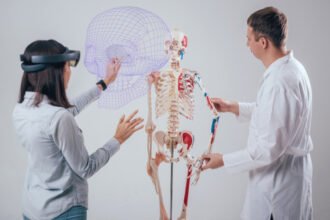By Robert Baron, MD
By Robert Baron, MD
Engaging residents and fellows in quality improvement and patient safety activities has become a goal for all GME programs and a reality for an ever-increasing number. In fact, the 2011 ACGME common program requirements mandate that trainees “systematically analyze practice using QI methods and implement change,” “work in interprofessional teams to enhance patient safety and improve patient care,” and “participate in identifying system errors and implementing potential solutions.” In many instances, however, QI projects are not fully integrated with the institution’s quality and safety goals, and may have minimal impact on patient care or costs.
In order to both increase resident and fellow involvement and to ensure that such efforts are fully aligned with the institution’s efforts, we have instituted at UCSF a quality and safety and cost reduction program that engages trainees in both institution-wide (all-program) and program-specific efforts. Although additional individual projects are also encouraged, our primary focus has been alignment with institutional priorities. Trainee input and leadership, however, remains paramount in helping to identify needed projects.
One way to heighten trainee engagement has been to institute pay-for-performance criteria. Eligible trainees can earn up to $1,200 each for successful completion of the goals. Over the first five years of the program, ten of 15 all-program goals have been met. An average of $800 per trainee has been distributed to almost a thousand trainees each year.
All-program goals focus on major institutional priorities and are aligned with pay-for-performance goals for other medical center staff. For example, increasing patient satisfaction has been a goal for trainees, nurses, and all other staff since the beginning of the program in 2007. Each year the goal is set higher. The goal has been met in all but one year. UCSF now has the highest levels of patient satisfaction in its history.
A second current all-program goal, also aligned with other health professional and staff goals, is improved hand hygiene. Here, too, the goal has been met. UCSF’s hand hygiene compliance is at its highest level (90 percent), a marked improvement from the baseline of several years ago, when it was less than 50 percent.
The third current all-program incentive goal is to decrease the use of unnecessary laboratory tests. Several years ago, we observed that lab utilization per patient admission was higher at UCSF than at peer institutions. Our first goal was to decrease the use of complete blood counts (cbc) and cbc plus differential by 5 percent. This was achieved. In year two, we added fifteen additional common laboratory tests to the goal. Tests were reduced by 8 percent, again meeting the goal. This year (year three), our efforts to decrease these lab tests by an additional 5 percent have not succeeded. The reduction of the two prior years, however, has been maintained. We may be at a new appropriate baseline.
Although the results have been satisfying (and the incentive payments much appreciated by trainees), it is highly likely that the incentive payments themselves were only a partial factor in the program’s success. As noted, many staff worked on these goals in addition to trainees. In fact, especially for patient satisfaction and hand hygiene, extensive efforts were undertaken by all to improve outcomes. Specific programs and an overall change in culture contributed to these successes. But having the trainees involved undoubtedly played a role in the improvements while also meeting trainees’ learning objectives.
As might be expected with such broad goals at a large institution, individual resident engagement was variable. Many reported a commitment to these changes and a few played major leadership roles. Others were aware of the program but felt that the all-program goals were too removed from their daily work. To address these issues, the residents and involved faculty began to conceptualize additional efforts to further engage residents. In 2008, program-specific pay-for-performance goals were instituted.
In this instance, a team of residents, residency program leadership, and physician quality leaders within a clinical department define specific improvement projects. The projects are closer to the work that the residents themselves perform on a daily basis but are still aligned with departmental quality and safety priorities. Each project is defined and submitted to a committee of Medical Center and GME leadership, QI leadership, the Resident and Fellow Council, and program directors and faculty. Proposals are vetted, improved, and resubmitted as needed. During the current academic year, 16 programs are actively working on projects. Workshops are held early in the process to help trainees develop their goals and later in the year to assess trainee progress and make adjustments. Completed work is presented at an end-of-year symposium.
Although still aligned with institutional goals, these department-specific projects reflect a broader range of improvement issues. Examples include more timely communication of biopsy results (Dermatology), decreased room to exam time (Emergency Medicine), increased completion of advance care planning notes (Internal Medicine), further reduction of laboratory test use (Neurological Surgery), increased communication with primary care providers (Pediatrics), and attestation of radiation doses in CT scan reports (Diagnostic Radiology). Here, too, all members of a program receive incentive payments if the project is successful. Last year, three-quarters of the programs achieved their goal.
As with the all-program goals, it is most likely the incentive payments themselves are not the primary factor in the programs’ success. Rather, trainees report that their ability to identify and solve system problems with appropriate mentoring, resources, teamwork, and respect is what makes the program work. For many residents, the program has led to increased competence in performance improvement, system change, measurement, teamwork, and leadership. For some residents, especially the resident champions, this work has motivated them to careers that include continued work in system change and leadership.
From the institution’s point of view, this program has led to cost avoidance and cost savings; enhanced reputation and patient satisfaction; improved outcomes in quality and safety measures; improved collaboration between physicians, nurses, and other medical center staff; and enhancement of the institution’s culture of patient safety and quality improvement. Moreover, the program demonstrates that clinical and educational goals can be fully aligned and integrated, and that learners can be “part of the solution.”
 —Robert B. Baron, MD MS, is Professor of Medicine and Associate Dean for Graduate and Continuing Medical Education at the University of California, San Francisco School of Medicine and a Robert G. Petersdorf Scholar-in-Residence at the AAMC. He can be reached at baron@medicine.ucsf.edu
—Robert B. Baron, MD MS, is Professor of Medicine and Associate Dean for Graduate and Continuing Medical Education at the University of California, San Francisco School of Medicine and a Robert G. Petersdorf Scholar-in-Residence at the AAMC. He can be reached at baron@medicine.ucsf.edu
Filed under: Medical Education, Payment Reform, Quality Reporting
![]()







